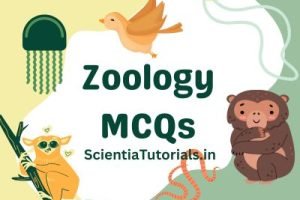MCQs on Animal Kingdom
MCQs on Animal Kingdom
1. Which class has the largest number of animals?
a. Fishes
b. Reptiles
c. Insects
d. Mammals
2. Identify the characteristic of acoelomates
a. Absence of mesoderm
b. Absence of brain
c. Coelom that is incompletely lined with a mesoderm
d. Solid body without a cavity surrounding internal organs
3. Salamander belongs to the class
a. Pisces
b. Aves
c. Reptiles
d. Amphibian
4. Which of the following combinations is incorrect?
a. Nematoda- roundworms, pseudocoelomate
b. Calcarea- gastrovascular cavity, coelom present
c. Echinodermata- coelom present, bilateral symmetry
d. Platyhelminthes- gastrovascular cavity, flatworms, acoelomate
5. Flame cells are the excretory structures for
a. Annelida
b. Coelenterates
c. Platyhelminthes
d. Echinodermata
6. Phylum Porifera is classified based on
a. Branching
b. Symmetry
c. Spicules
d. Reproduction
7. The canal system in sponges develops due to
a. Porous walls
b. Gastrovascular system
c. Reproduction
d. Folding of inner walls
8. Select the correct pair
a. Arthropoda- silver fish
b. Pisces- jelly fish
c. Echinodermata- cuttle fish
d. Mollusca- star fish
9. Which group does not contain polyp?
a. Anthozoa
b. Hydrozoa
c. Scyphozoa
d. Calcarea
10. Ascaris is characterized by
a. Presence of true coelom and metamerism
b. Presence of true coelom but the absence of metamerism
c. Absence of true coelom and metamerism
d. Absence of true coelom but the presence of metamerism
11. Cnidaria is characterized by
a. Tissue level of organization
b. Nematoblasts
c. Coelenteron
d. All
12. Notochord occurs throughout life and all through the length of the body in
a. Cephalochordata
b. Hemichordata
c. Urochordata
d. Vertebrata
13. Periplaneta belongs to which phylum?
a. Mollusca
b. Arthropoda
c. Annelida
d. Echinodermata
14. Which of the following characters is not typical to class Mammalia?
a. Alveolar lungs
b. Seven cervical vertebrae
c. Thecodont dentition
d. Ten pairs of cranial nerves
15. Radial symmetry is found in
a. Coelenterata and Platyhelminthes
b. Coelenterata and Echinodermata
c. Arthropoda and Mollusca
d. Porifera and Coelenterata
Answer Key
| 1- c | 2- d | 3- d | 4- b | 5- c | 6- c | 7- d | 8- a |
| 9- d | 10- c | 11- d | 12- a | 13- b | 14- d | 15- b |



